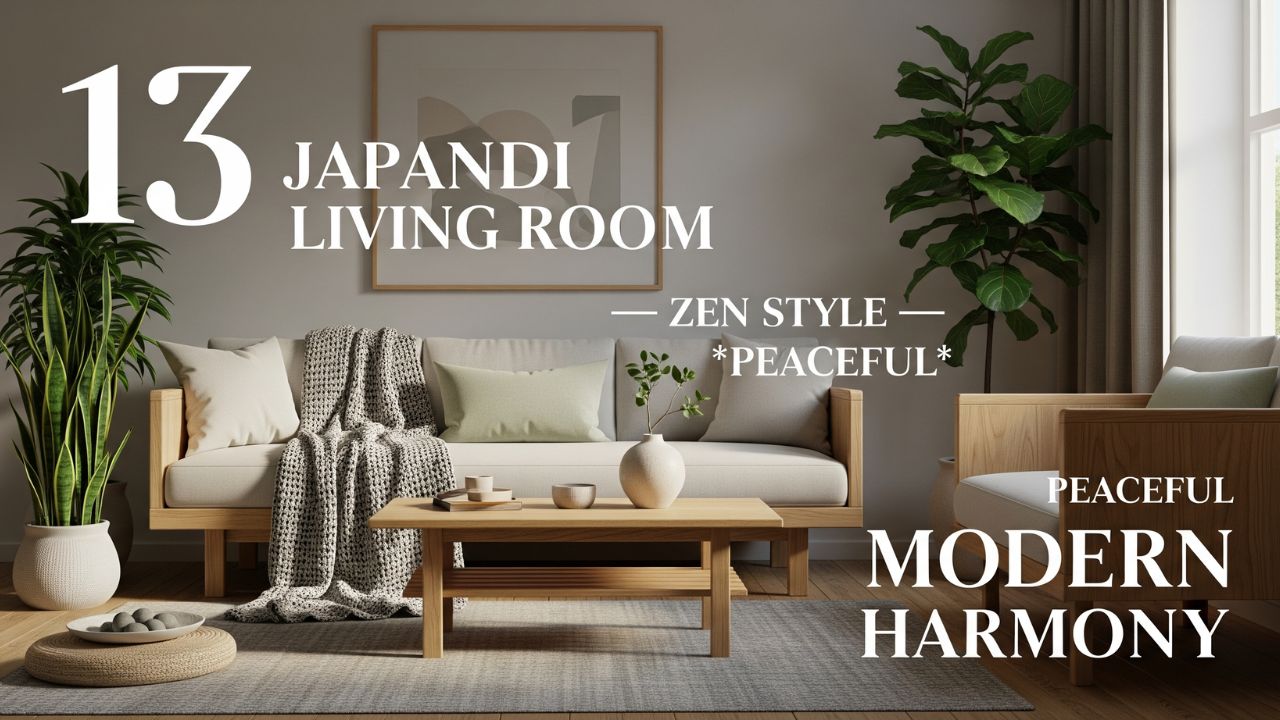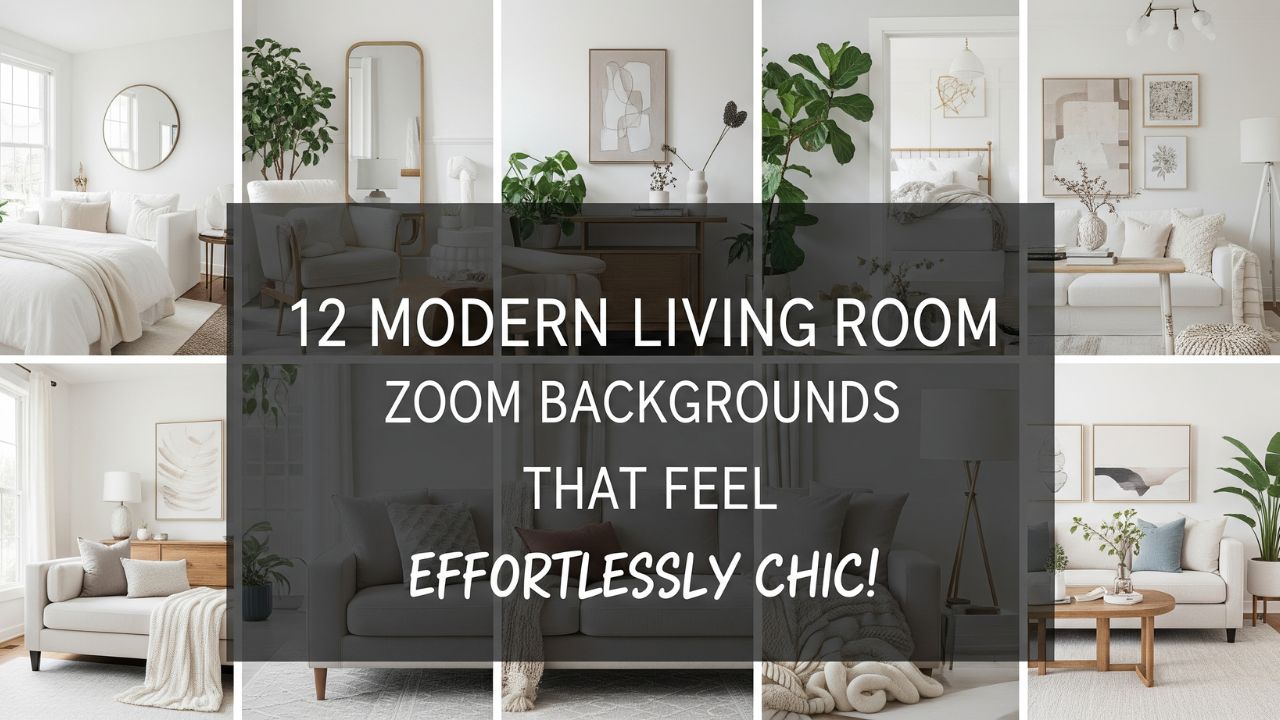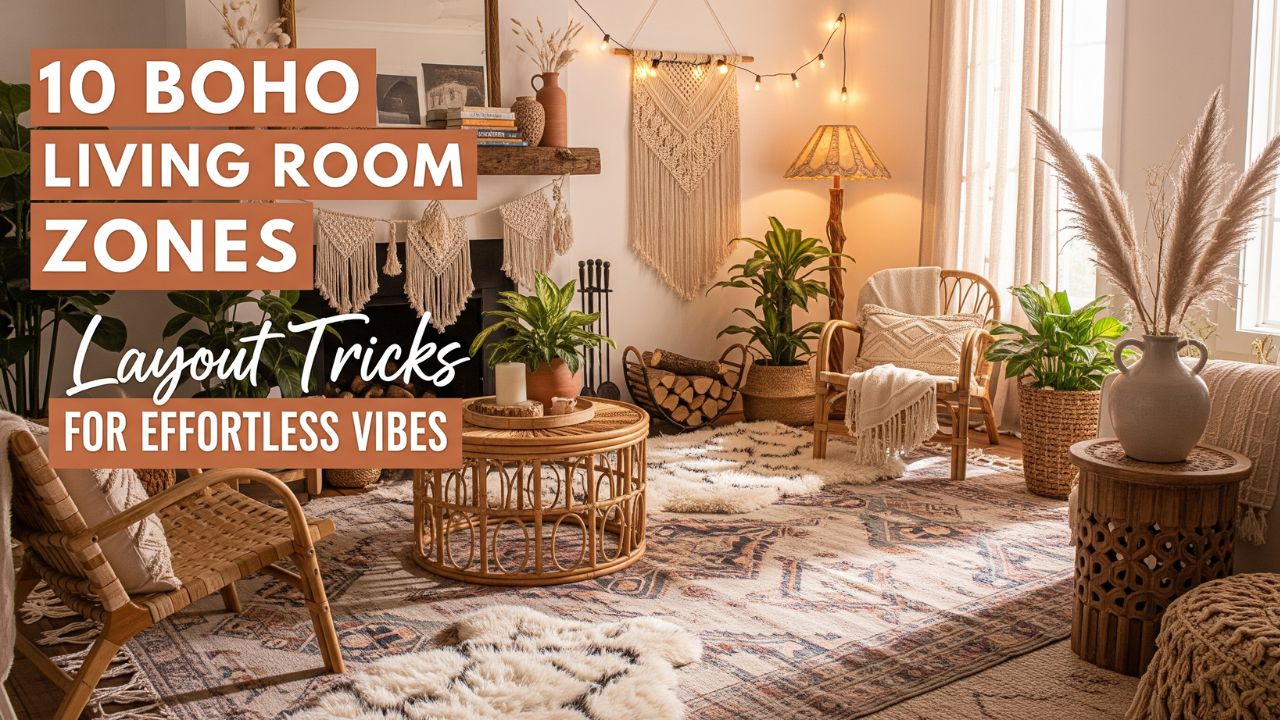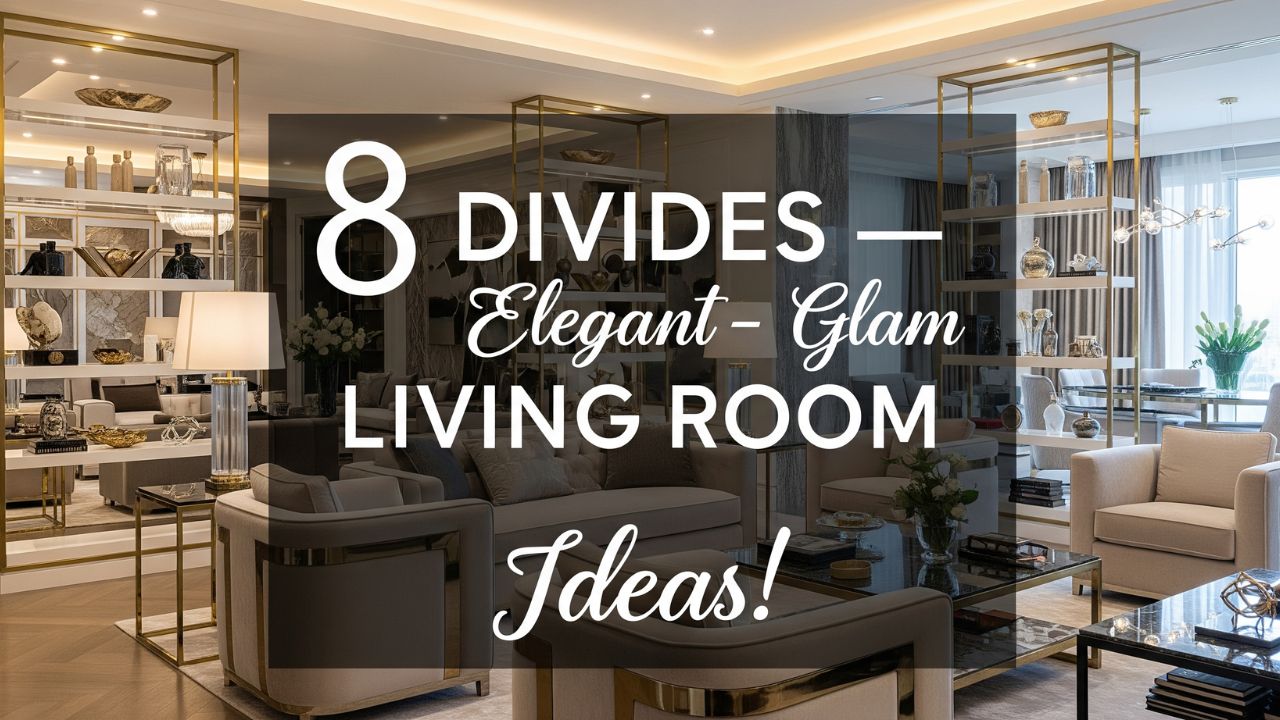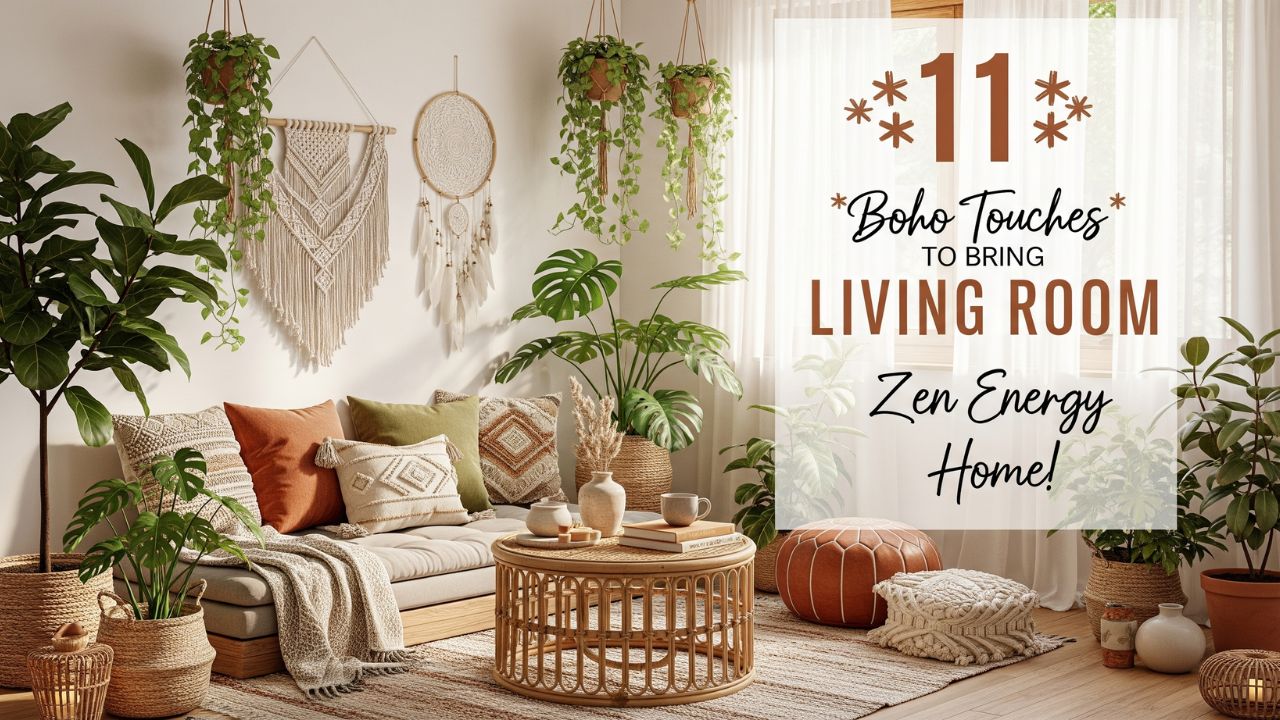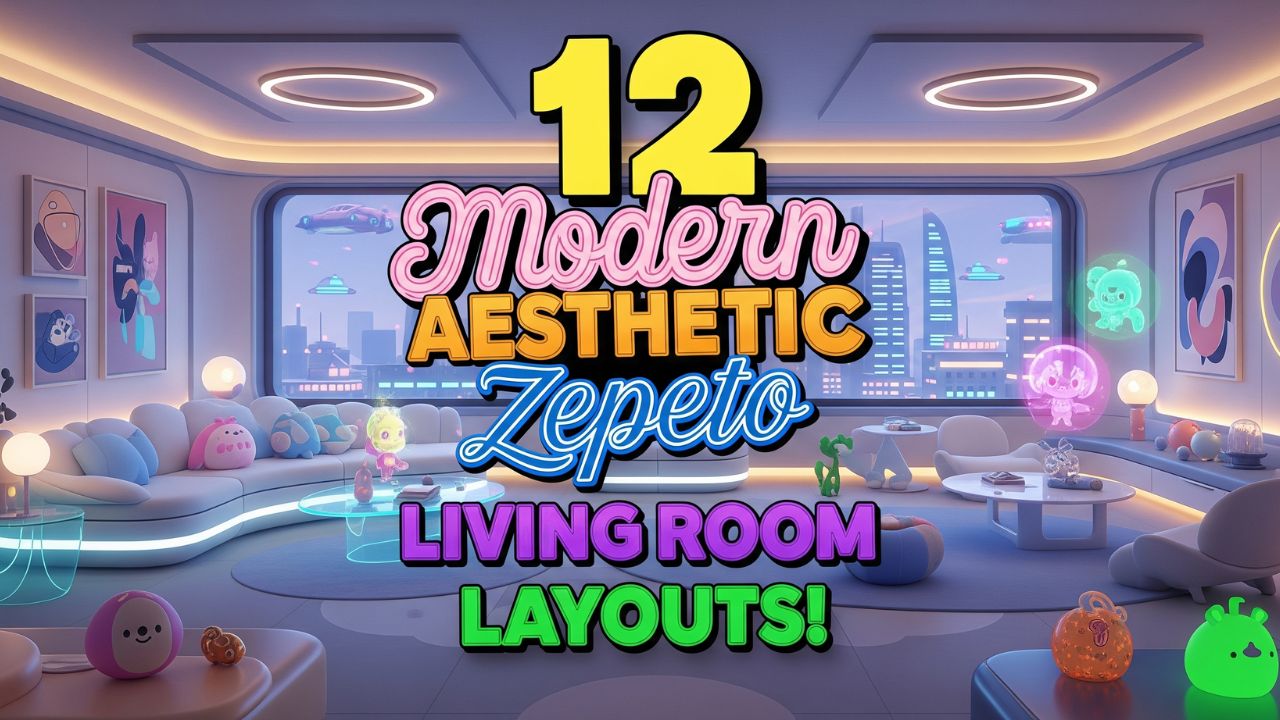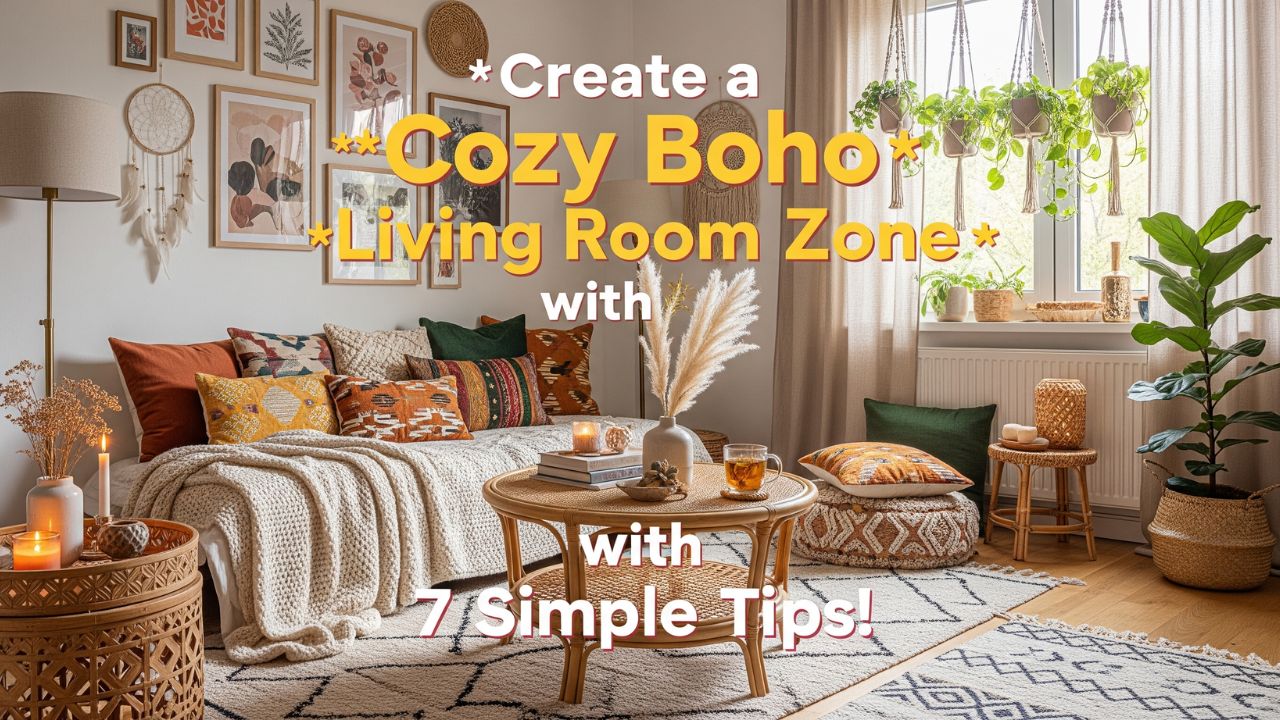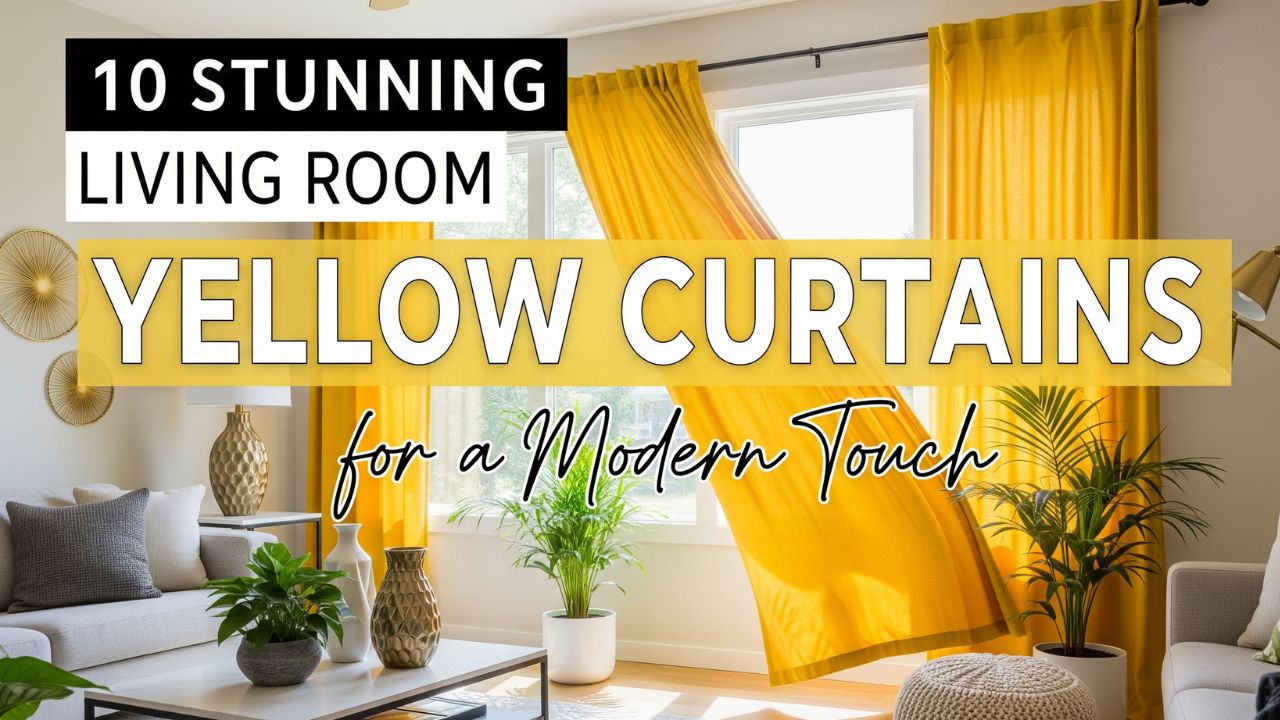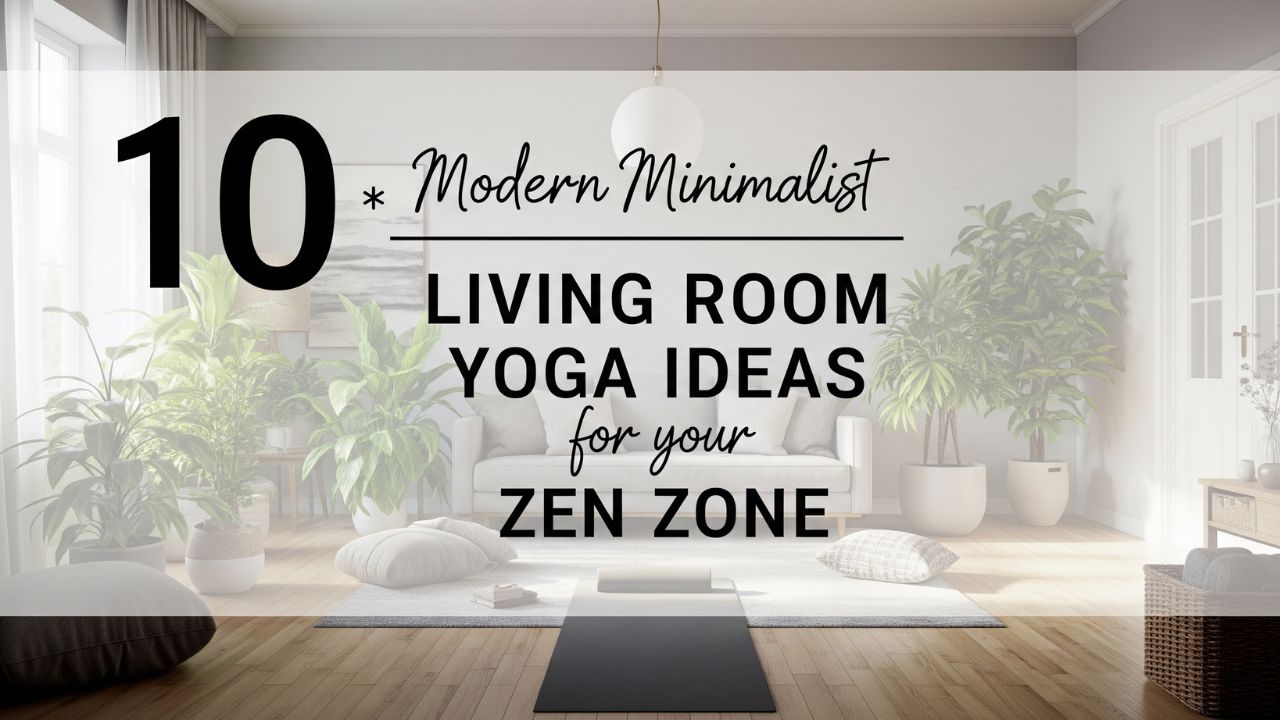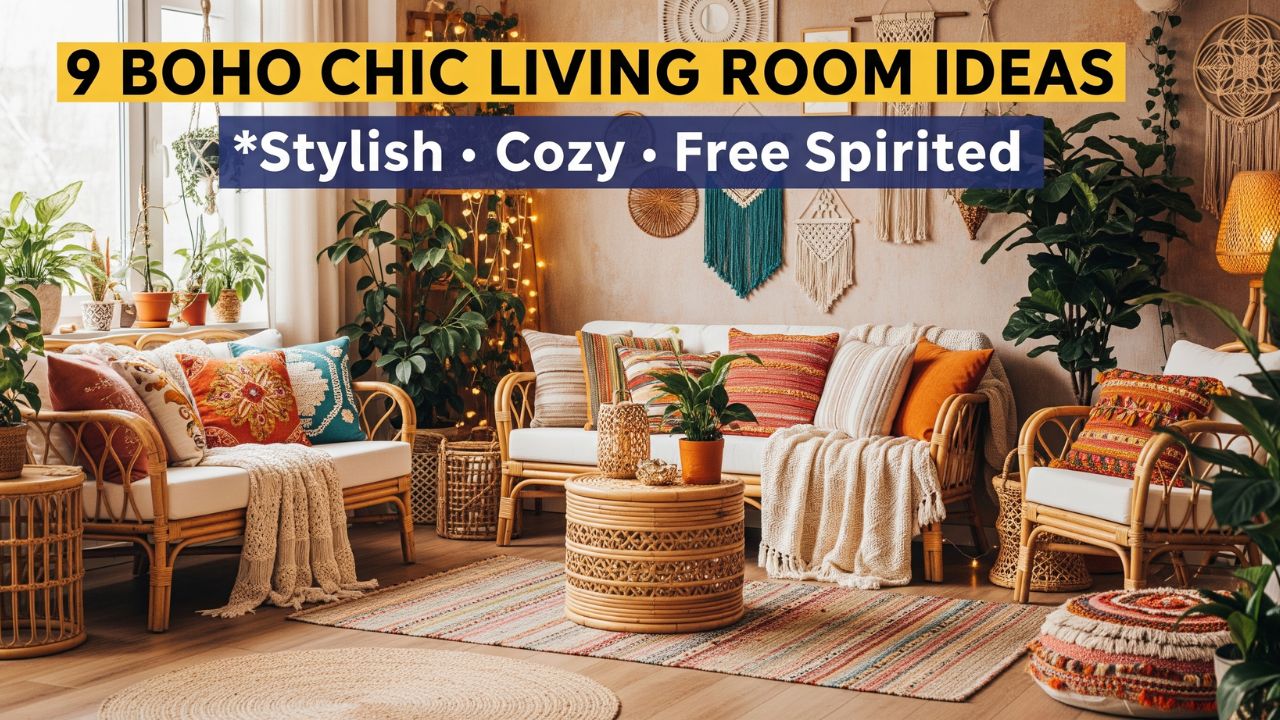Whether you’re setting up a lounge space for Sunday afternoons, creating a backdrop for your next hygge-inspired moment, or simply craving a living room refresh with personality, these ideas will guide you.
Along the way, we’ll sprinkle in fun facts, myths, and design insights to deepen your understanding of bohemian style. So settle in, grab a cup of tea, and let’s explore how to bring that laid-back, layered, soulful aesthetic into your living room.
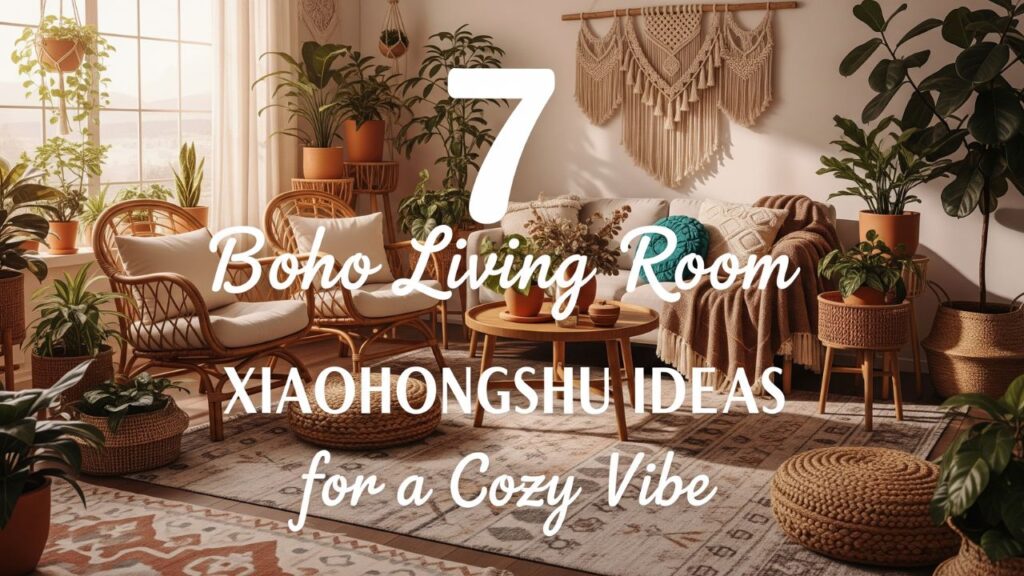
Table of Contents
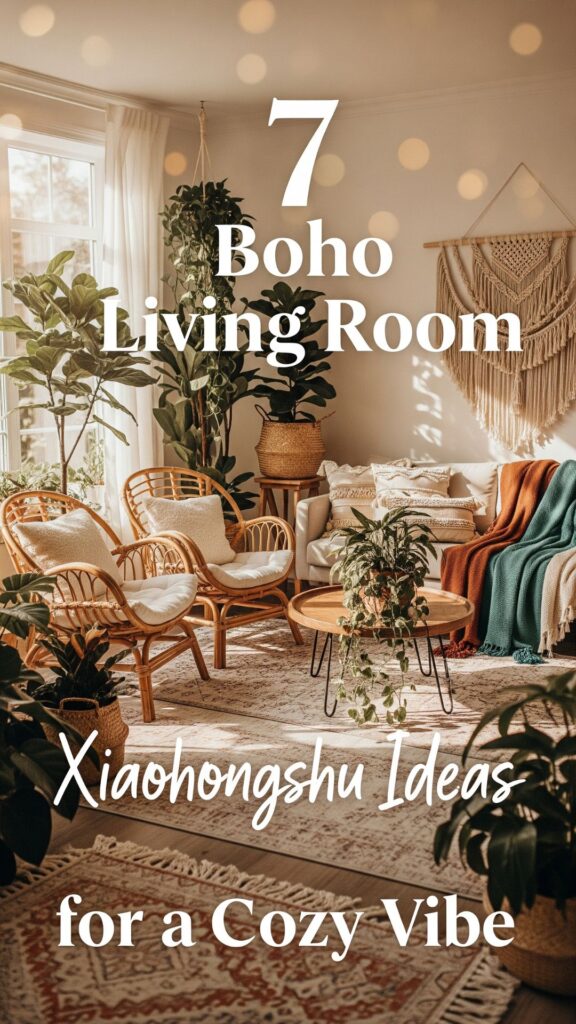
7 Boho Living Room Xiaohongshu Ideas
1. Embrace Natural Materials & Organic Textures
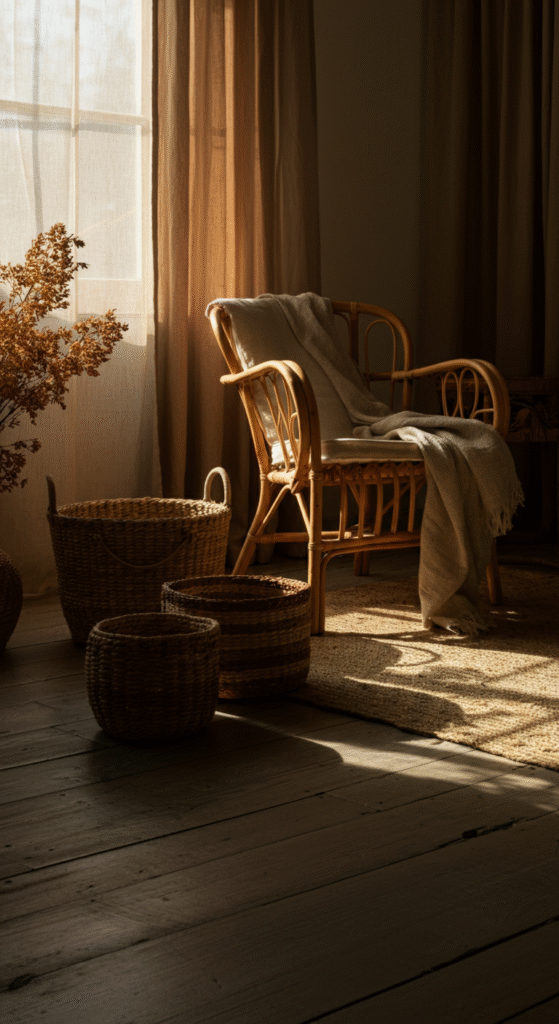
When you think boho, think raw. Wood, rattan, jute, linen—these materials ground your space and create a tactile richness that’s inherently cozy. Switching out glossy finishes for something textured transforms a room from “just furnished” to “just lived-in.”
Do you know? The bohemian aesthetic traces some of its roots to nomadic, unconventional living styles, where creating comfort from what’s at hand was more important than strict formality.
For example:
- A rattan chair paired with a wool-knit throw adds warmth and real-world softness.
- A jute rug layered over a wooden floor invites you to kick off your shoes and settle in.
- Wooden bookshelves or side tables with visible grain texture create visual interest without needing extra decoration.
Where many make mistakes: They introduce natural textures but keep everything new and pristine. The boho look thrives on a mix of the new and the worn-in—so don’t shy away from pre-owned or raw-edged pieces.
2. Layer Patterns, Colors & Textures Boldly
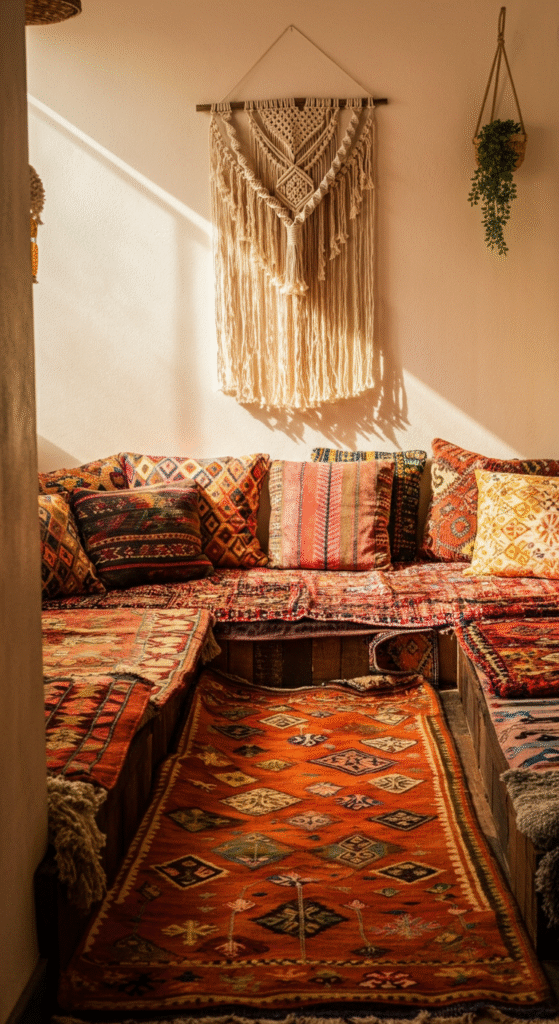
Boho design is the antidote to minimalism. It celebrates personality, eclecticism, and the joy of layering. According to recent design features, this layering is a cornerstone of achieving a truly inviting boho living room.
How to do it:
- Start with a neutral base (walls, large sofa) then add pattern via cushions, rugs, throws.
- Mix large-scale patterns (like a kilim rug) with smaller ones (like a geometric pillow) to avoid visual monotony.
- Combine textures: leather, velvet, woven, macramé, looped wool—each invites touch and variation.
Fun myth: There’s a misconception that boho = messy or cluttered. In truth, the best boho spaces feel curated, not chaotic. They’re intentional about expression rather than just random accumulation.
3. Bring Greenery & Nature Inside
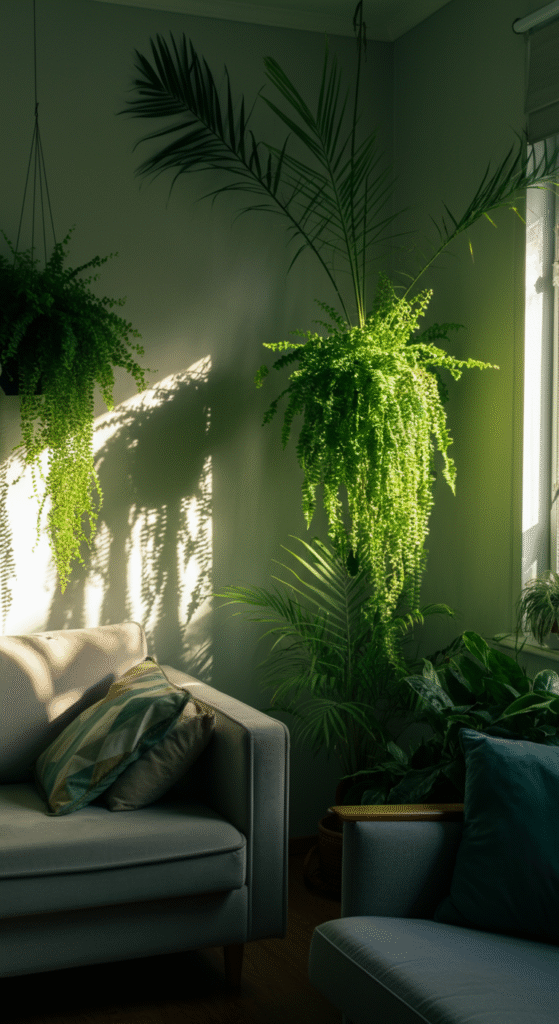
Plants are to boho décor what music is to a film—they bring the space alive. The presence of lush greenery adds life, softens edges, and mimics the free-spirited feel of living closer to nature.
Key ideas to try:
- Choose plants of varying heights: tall palms or fiddle-leaf figs, mid-level ferns, small succulents.
- Use natural planters—terracotta pots, woven baskets, macramé hangers—to maintain the boho texture chain.
- Create plant clusters rather than scattering single pots around; grouped greenery pulls the eye and creates a mini “jungle corner.”
Interesting fact: In one boho-inspired interior feature, the designer called the space a “nature room” because of the organic objects and greenery contained.
This reminds us: boho isn’t just about things—it’s about atmosphere.
4. Mix Old & New: Vintage Finds Meet Modern Comfort
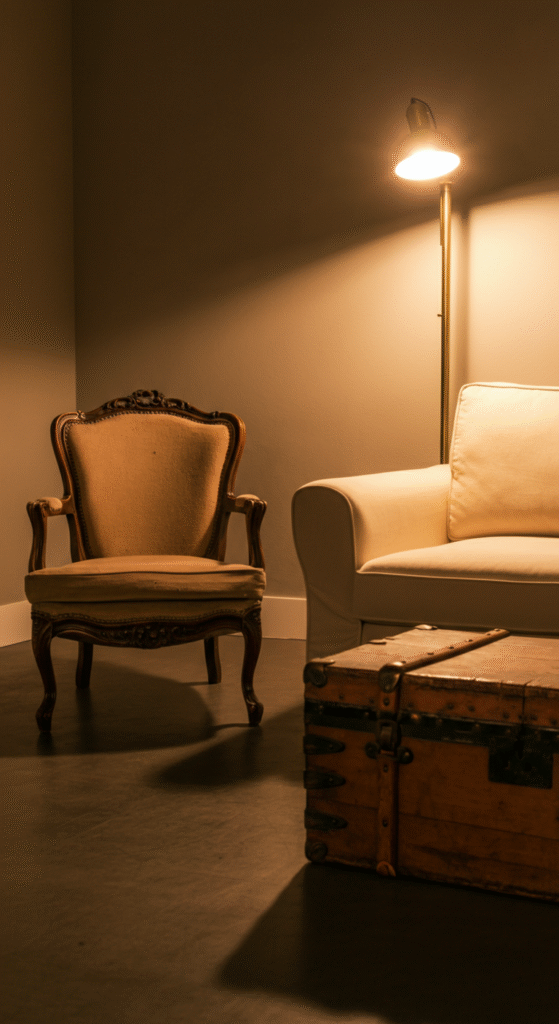
Part of what gives boho living rooms their soul is the mix of eras, stories, and objects. A modern sofa next to a flea-market coffee table, a newly purchased rug beside a reclaimed trunk—this juxtaposition builds character.
Why it works:
- Vintage pieces often come with imperfections (scuffs, patina) that tell a story.
- Modern comforts ensure your space is still functional and comfortable, not purely aesthetic.
- Mixing allows you to curate rather than replicate; your space becomes unique.
Tip: When hunting for vintage pieces, look for things with structural integrity (solid wood frames) and then refurbish/accessorize to give them new life. The authenticity of a piece enhances the boho feel.
5. Create a Relaxed & Intimate Seating Area
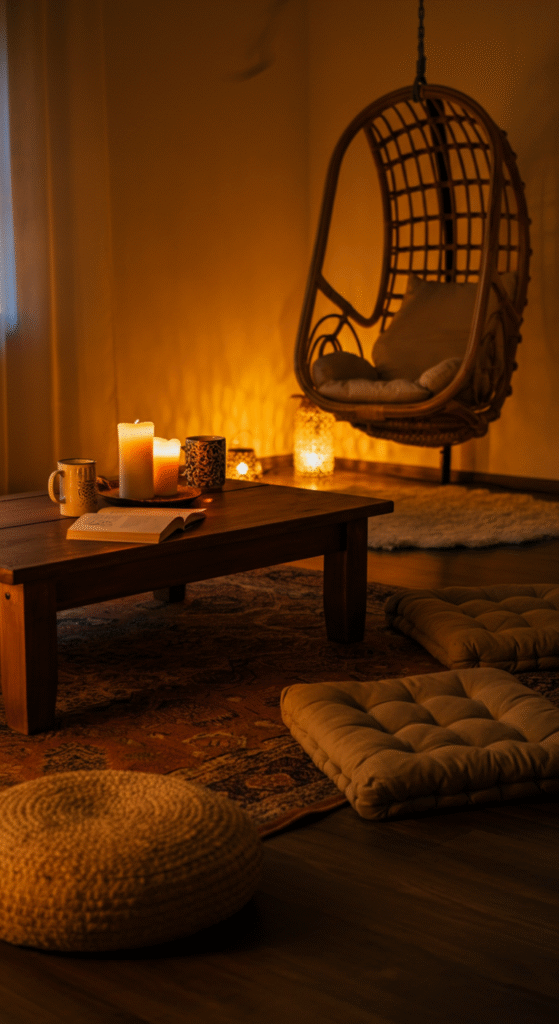
A bohemian living room should invite lounging, lingering, and connection. That means seating areas designed to linger, not line. Think comfy, informal, and multi-purpose.
Features to incorporate:
- Deep-seated sofas or modular sectionals with plenty of cushions for comfort.
- Lounge chairs, floor cushions, poufs scattered for relaxed seating.
- A hanging chair or swinging rattan seat (if space allows) adds playful movement and a unique touch.
Quick myth: Some believe boho means you must discard structure entirely. In fact, structure exists—it’s just softer. Curved sofas, round tables, organic shapes rather than rigid squares.
6. Introduce Personal & Global Souvenir Elements
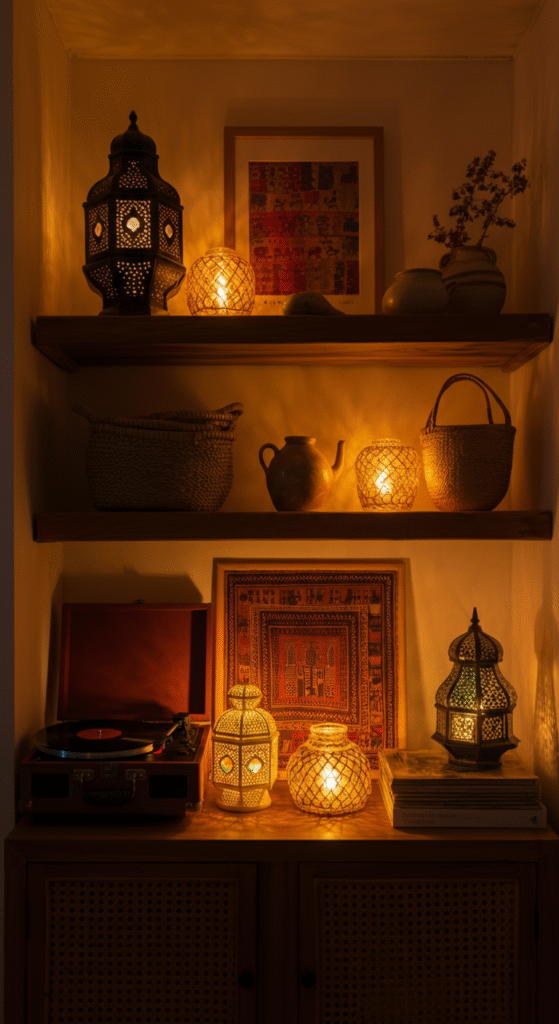
Boho style thrives on the notion of travel, memory, handmade, and global influences. When you incorporate objects that speak to your journey, your tastes, your roots, the space becomes deeply you.
Ideas for implementation:
- Display a vintage textile you picked up on a trip, perhaps framed or draped.
- Use baskets from another country as storage, turning practical into statement.
- Mix artisanal pieces—hand-woven pillows, carved wood, brass trays—with your everyday items for a layered effect.
Fun fact: The term “bohemian” originally referred to a non-conformist lifestyle, and the design style carries that rebellious, individual-first spirit.
So, when you include something unconventional or meaningful to you, you’re very much in the spirit of boho.
7. Choose a Soft, Warm Palette with Points of Boldness
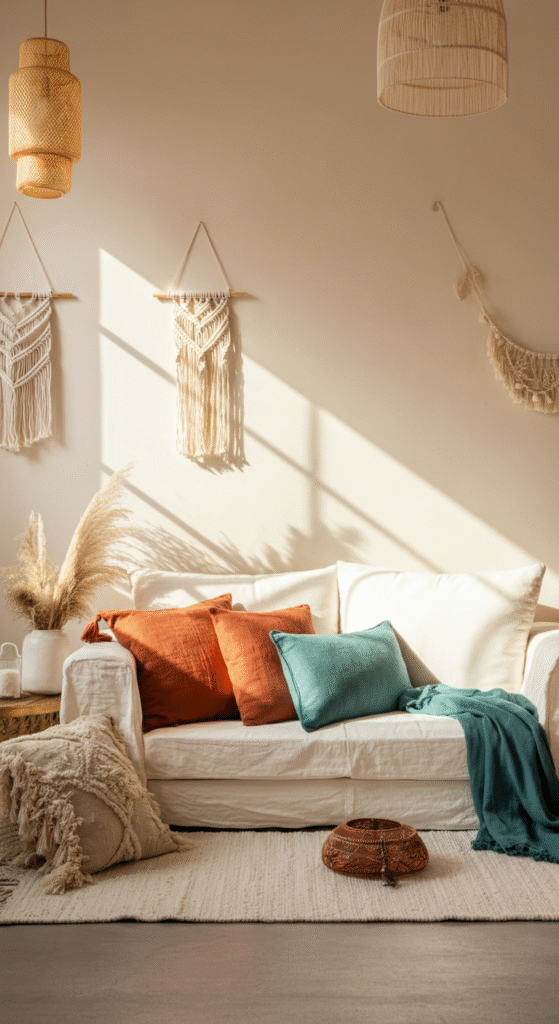
Color is a tool for emotion. In a boho living room on Xiaohongshu (or anywhere), the palette typically leans warm, inviting, layered—but that doesn’t mean monochrome. You’ll find a base of neutrals with accent colours that pop.
Palette suggestions:
- Base: cream, beige, soft grey, natural wood tones.
- Layer: terracotta, mustard yellow, olive green, muted teal.
- Accent: jewel tones (deep sapphire, rich amber) or metallics (brass, gold) for sparkle.
Interesting insight: One design piece suggested that in boho living rooms, “heavily saturated colours rather than garish ones” can create depth without feeling chaotic.
So, the key is balanced richness—not sticker-shock colour, but thoughtful saturation.
Conclusion
Creating a cozy-vibe boho living room isn’t about following a rulebook—it’s about embracing freedom, texture, and personality.
From layering natural materials and patterns, to bringing plants indoors, to mixing vintage and modern, to choosing a palette that soothes yet sparks—you’re building more than a room. You’re crafting a sanctuary.
Whether your inspiration comes from Xiaohongshu posts, Pinterest boards, or your own lived memories, the core of boho remains: comfort, creativity, and character.
So pick the ideas that speak to you, adapt them to your space in Dubrajpur (or wherever you are), and stitch together a living room that isn’t just decorated—but alive.
Let your space reflect you.
Frequently Asked Questions (FAQs)
What defines a boho living room style?
Boho (short for bohemian) style is free-spirited and eclectic. It combines natural textures, rich patterns, earthy tones, and personal touches from different cultures to create a cozy, lived-in feel.
Can a small living room pull off the boho look?
Absolutely. Focus on layered textiles, vertical greenery, and light, warm colors to make the space feel cozy but not cluttered.
What are must-have elements for a cozy boho vibe?
Natural materials (rattan, wood, linen), soft lighting, plants, layered rugs, and plenty of throw pillows form the core of a cozy boho setup.
Do I need to buy everything new to create a boho look?
No. In fact, mixing old and new is key. Thrifted, handmade, or vintage finds add authenticity and soul to your space.
What colors work best for boho interiors?
Warm neutrals (cream, beige, tan) paired with earthy or jewel-tone accents like terracotta, mustard, olive, and teal.
